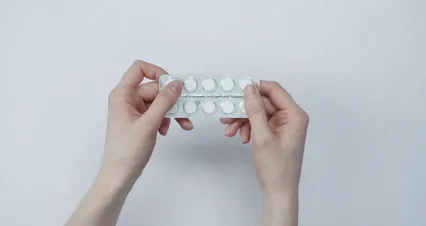Introduction
Fleas are a common nuisance for dogs. These tiny parasites can cause significant discomfort and health issues. Effective treatment is crucial for your pet’s well-being. In this article, we’ll cover everything you need to know about flea pills. We’ll discuss types, benefits, and top recommendations. Always consult with your veterinarian for the best results.
Summary and Overview
Flea infestations can seriously impact your dog’s health. These pests cause itching, skin irritations, and even diseases like anemia. Flea pills serve as a preventive measure, helping to keep your dog flea-free. They come in different types, such as fast-acting options that work quickly and long-lasting treatments that provide extended protection.
Common flea pills include those that target adult fleas, larvae, and even inhibit egg-laying. Finding the right option can be overwhelming. That’s why your veterinarian plays a crucial role in recommending the best treatment based on your dog’s specific needs and lifestyle. Regular flea prevention is essential for keeping your furry friend happy and healthy.

For effective flea prevention strategies, consider exploring the best practices for reducing flea infestations in multidog households.
Understanding Fleas and Their Impact on Dogs
What Are Fleas?
Fleas are small, wingless parasites that thrive on the blood of mammals, including dogs. Their life cycle consists of four stages: egg, larva, pupa, and adult. Adult fleas lay eggs on your dog and in the environment, which can quickly multiply. This rapid reproduction leads to infestations that can affect your pet’s health.
A flea bite causes intense itching and discomfort. Dogs may scratch excessively, resulting in skin irritation or infections. Allergic reactions to flea saliva can lead to flea allergy dermatitis, a painful skin condition. Additionally, fleas can carry diseases such as tapeworms and anemia, posing serious health risks. Signs of an infestation include excessive scratching, flea dirt (small black specks), and hair loss.

Why Flea Prevention is Crucial
Preventing flea infestations is vital for your dog’s health. Fleas not only cause discomfort but can also lead to serious health issues, including flea allergy dermatitis and secondary infections. The cost of treatment can be higher than preventive measures. By investing in prevention, you reduce the chance of infestations and the health complications they bring.
Furthermore, fleas can negatively impact your home environment. They reproduce rapidly, spreading beyond your pet to carpets and furniture. Regular prevention keeps your dog healthy and helps maintain a clean living space. By addressing flea control proactively, you safeguard both your pet’s well-being and your home.

To effectively combat these pesky intruders, consider using the NexGard Flea and Tick Chewables for Dogs. These tasty chewables not only make flea prevention a breeze but also ensure your pup enjoys a beef-flavored treat every month. Who knew keeping your dog flea-free could be so delicious?
Types of Flea Pills for Dogs
Overview of Flea Pills
Flea pills are oral medications that help control flea infestations in dogs. These pills work by targeting adult fleas and preventing them from reproducing. When a flea bites your dog, the active ingredients in the pill enter their bloodstream and kill the flea. This action also disrupts the flea life cycle, preventing future infestations.
Common active ingredients in flea pills include afoxolaner and sarolaner. Afoxolaner, found in NexGard, acts quickly to eliminate fleas within hours. Sarolaner, present in Simparica, offers similar rapid results. Other ingredients like fluralaner and spinosad also play vital roles in various flea medications. Each ingredient is designed to ensure your dog remains comfortable and flea-free.

Comparing Flea Pills to Other Treatments
When choosing a flea treatment for your dog, consider the differences between flea pills and other options like topical treatments, collars, and sprays. Flea pills are highly effective and easy to administer; simply give them as a chewable or tablet. They work systemically, providing protection from both adult fleas and larvae.
Topical treatments, such as spot-ons, are applied directly to the skin. While these can be effective, they may leave a greasy residue. Collars offer long-lasting protection but can be less effective in severe infestations. Sprays are versatile but require careful application to ensure coverage.
In terms of cost, flea pills can be more expensive upfront, but they often provide better overall effectiveness. Weighing these factors will help you choose the right flea prevention method for your dog.

Recommended Flea Pills for Dogs
Top Brands and Products
When it comes to flea pills for dogs, several brands stand out. Let’s look at some top choices:
- NexGard: This chewable tablet contains afoxolaner, effective against fleas and ticks. It starts working within 24 hours, providing rapid relief. Administer once a month, and your dog will enjoy a beef-flavored treat. Customers rate NexGard highly for its ease of use and effectiveness, with many noting improved comfort for their pets.
- Bravecto: Bravecto offers a unique advantage with its three-month protection. This chewable contains fluralaner, targeting both fleas and ticks. It’s convenient for busy pet owners, as just one dose lasts longer than many competitors. Reviews often highlight its effectiveness and minimal side effects, making it a favorite among dog owners.
- Simparica: This option features sarolaner and delivers protection for a full month. It acts quickly against fleas and ticks, often starting to work within hours. Many users appreciate its palatability, with dogs eagerly accepting it. Customer feedback often mentions noticeable reductions in scratching and discomfort.

When selecting a flea pill, consider your dog’s weight and health. Follow dosage instructions carefully, as proper administration is crucial for effectiveness.
For an added layer of protection, consider pairing your flea prevention strategy with the Vet’s Best Flea and Tick Home Spray. It’s a fantastic way to keep your home free from fleas while ensuring your furry friend remains comfortable. Plus, it’s made with natural ingredients, so you can feel good about using it around your pets!

Choosing the Right Flea Pill
Choosing the best flea pill requires careful consideration of your dog’s unique needs. Start by assessing your dog’s size, weight, and age. For example, some products are suitable for puppies over eight weeks old, while others cater to adult dogs only.
Health conditions also play a role. If your dog has allergies or other issues, consult your veterinarian for tailored recommendations. Your vet can help you identify potential interactions with other medications or underlying health concerns. Personalized advice ensures you select a safe and effective option for your furry friend. Don’t skip this step; it can make all the difference in your dog’s comfort and health.

Administration and Safety
How to Administer Flea Pills
Administering flea pills to your dog can be simple and effective. Start by choosing the right time to give the medication. Ideally, administer it with food. This can help prevent any stomach upset and ensure better absorption. You can mix the pill with your dog’s favorite treat or food to make it more appealing.
If your dog is a reluctant eater, try using a pill pocket. These are soft treats designed to hide tablets. Alternatively, you can crush the pill and mix it with a small amount of moist food. Always ensure your dog consumes the entire dose for maximum effectiveness.
Monitoring your dog after administration is important. Keep an eye on their behavior and appetite for any changes. If your dog refuses to eat or shows signs of distress, consult your veterinarian promptly.

Potential Side Effects and Risks
Like any medication, flea pills can have side effects. Common reactions include vomiting, diarrhea, and lethargy. Some dogs may also experience loss of appetite or excessive drooling. It’s essential to watch for these signs after administering the pill.
If your dog shows any severe reactions, such as difficulty breathing or swelling, seek veterinary help immediately. Reporting any adverse effects to your vet can provide valuable information for future treatments.
Regular communication with your veterinarian is key. They can offer guidance on how to proceed if side effects occur. Remember, while flea pills are generally safe, your dog’s health should always come first.

Conclusion
Flea pills serve as an effective solution for preventing and treating flea infestations in dogs. Proper administration is essential to ensuring your pet benefits from these medications. Always monitor for potential side effects and consult your vet for personalized advice. Preventive care is crucial in maintaining your dog’s health and comfort. Stay proactive in your flea control efforts for a happier, healthier furry friend.
And if you’re looking for something to keep your pup entertained while you’re busy battling those fleas, check out the KONG Classic Dog Toy. This durable toy will keep your dog busy for hours, giving you some well-deserved peace and quiet!
Please let us know what you think about our content by leaving a comment down below!
Thank you for reading till here 🙂
All images from Pexels





